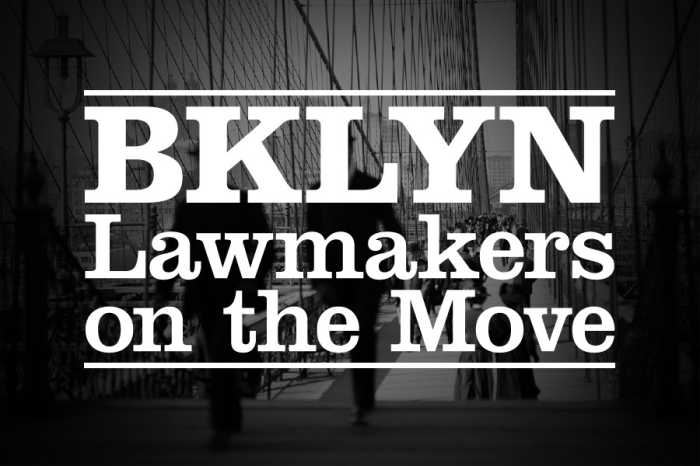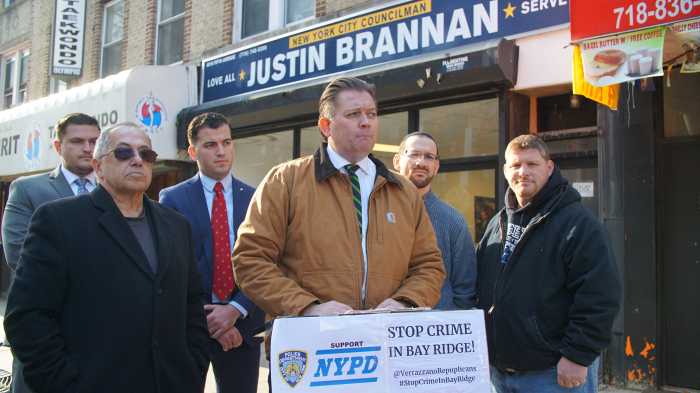Take two.
The New York City Districting Commission narrowly voted down a set of revised new City Council district maps Thursday morning, upending what was expected to be a procedural vote where the maps would be passed onto the council for final approval.
Until now, the City Council redistricting process appeared quite smooth when compared to the state redistricting earlier this year that saw the state’s highest court throw out maps drawn by the Democrat-controlled state legislature.
Because the 15-member commission voted the maps down – by an 8 to 7 margin – they’ll have to reconvene to discuss next steps in the process, commission Chair Dennis Walcott said.
“We’re already getting back to business,” Walcott said in a statement Thursday afternoon. “We’re scheduling a commission meeting right after the Jewish Holidays so we can address members’ concern and get the map into the City Council Speaker’s hands at the earliest possible date.”
The commission is made up of seven members appointed by Mayor Eric Adams, five appointed by Council Speaker Adrienne Adams and three appointed by Council Minority Leader Joe Borelli (R-Staten Island). One of the dissenting votes came from Joshua Schneps – CEO of Schneps Media, which owns PoliticsNY along with several other local publications.
The eight commissioners who gave the revised maps a thumbs down, said they’re “no” votes resulted from the splitting up of communities of interest – diluting the political power of certain communities – and a messy process. The maps were reconfigured based on an initial set of draft lines released July 15.
One of the dissenting commissioners, Michael Schnall of Staten Island, said the main reason for his vote was the commission’s move to lump part of southern Brooklyn in with Staten Island’s 50th District.
“When it comes to vilifying Staten Island, and there’s been a lot of that recently, it frankly, it’s cliche. I’ve heard it my entire life. I’m tired of it and enough is enough,” Schnall said. “Staten Island deserves the same respect and chance at self determination that the other boroughs enjoy.”
Schnall, the only Staten Islander on the commission, was referring to statements made by City Council Speaker Adrienne Adams and others that keeping Staten Island’s three council districts intact in the first round of maps caused problems for districts in the other four boroughs.
He said connecting Staten Island and Brooklyn in a district is both unfair to the 16,000 Brooklyn residents who would have to cough up $20 to cross the Verrazano-Narrows Bridge every time they want to see their council member and Staten Islander’s, who’s political power would be significantly diluted.
“I am adamantly opposed to the addition of approximately 16,000 people from Brooklyn to Council District 50,” Schnall said. “This move disenfranchises those 16,000 people who deserve adequate and accessible representation. They will have to pay a $20 toll and drive 10 miles to see their council member. This is unfair, inequitable and completely avoidable. This Brooklyn edition dilutes Staten Island’s political power and sets the borough back 10 years in the progress we’ve made to establish ourselves and chart our own path as a borough.”
Additionally, Schnall blasted the process, saying most of the commission’s meetings were held during the work day on short notice. Another problem, he said, was that a few members on the commission had an outsize role in the decisions that were ultimately made.
Walcott, who voted in favor of the maps, sharply disagreed with Schnall’s assessment, saying he believes the commission had a strong process that it adhered to.
“I believe both in the substance and the process and I think the substance in the process has been adhered to,” Walcott said. “I think the number of community meetings, the input for individuals as well as the dialogue back-and- forth, including Commissioner Schnall and others – as far as the line drawing with the mappers as well has been extremely beneficial to the process. And again, I think the challenge is making sure that we don’t undermine all the hard work and allow the process to unfold to the next step. Because I think the commission has done an excellent job in meeting its responsibility and its due diligence.”
The rejected new maps were informed by 8,909 pieces of written and verbal public testimony the commission received at five hearings held across the city – one in each borough – since July, according to commission spokesperson Eddie Borges. Overall, the commission has held 10 hearings and collected over 9,500 pieces of testimony.
The revised maps reversed major changes in the first round of lines that drew the most criticism. Particularly, going back on criss-crossing the districts of Brooklyn Democrat Council Members Justin Brannan and Alexa Aviles, which they said disenfranchised the district’s large Latino communities in Red Hook and Sunset Park.
The revised maps also back-peddled on a proposal to fold Roosevelt Island and part of the Upper East Side into a Queens district – District 26 – in the first set of lines, which could’ve set up a showdown between Council Members Julie Menin (D-Manhattan) and Julie Won (D-Queens).

One council member who supports the commission’s surprise vote is Ari Kagan (D-Brooklyn). Under the revised plan, Kagan’s district would’ve been mixed with both Brannan’s and Council Member Kalman Yeger’s (D-Brooklyn), meaning he would’ve had to run against one of his two colleagues to keep his seat.
The “commission did a right thing and listened to many southern Brooklyn communities,” Kagan told PoliticsNY via text. “Now they need to work with all community stakeholders to draw new just, fair and compact districts in Southern Brooklyn.”
In a statement responding to the vote, good government group Citizens Union Executive Director Betsy Gotbaum expressed surprise at the outcome and concern that a prolonged process will hinder the public’s ability to weigh-in on the final maps.
“Today’s vote by the NYC Districting Commission comes as a surprise,” Gotbaum said. “Should the Council reject the commission’s next revision, we are concerned that by delaying the process, there will be limited time for public input on the maps. We encourage them to quickly resolve their issues so there can be adequate time for New Yorkers to review these maps.”
While the commission seemed to be responsive to “public feedback” and “community concerns” in redrawing the maps, Gotbaum said, they still ultimately voted them down, which is why the commission’s deliberations should be opened to the public going forward.
“Today’s vote demonstrates the need for transparency throughout the process,” she said. “Opening the commission’s deliberations to the public would have allowed all commissioners to weigh in on the issues that led to today’s surprise vote. The Commission should hold its next deliberations in public to prompt healthy dialogue between commissioners. This act will reduce the potential power of outside influence on the process.”
This story was updated at 3:50 on Thursday, Sept. 22, 2022.








